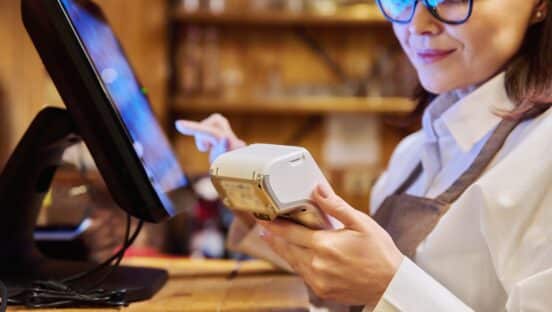The National Restaurant Association’s “State of the Industry” report for 2023 found that 92 percent of quick-service operators cited labor costs as a significant challenge. Similarly, a reported 79 percent of restaurant operators were having trouble filling open positions.
In response to these challenges, many quick-service brands are turning to technology. In fact, The Association’s report stated that 59 percent of quick-service operators will use more tech and automation in 2023 as a result of the labor crisis.
Tech and automation is already helping quick-service restaurants deliver a better drive-thru experience, and one of the latest and most exciting technologies in the space is AI-driven voice-ordering automation. The solution is helping reduce wait times, enhance order accuracy, upsell effectively, and—perhaps most pivotally—lessen the workload employees are juggling.
QSR magazine recently sat down with Ben Bellettini, vice president of sales at SoundHound, to discuss how AI-driven voice ordering platforms are the present and future of the drive thru.
QSR: How is voice-ordering transforming the drive-thru experience?
Bellettini: “Unfortunately, 4 out of 5 quick-service restaurants are currently short on labor. That’s always been a pain point, but it’s reached historic levels since the pandemic.
Merchants are asking themselves, ‘How do we maintain the type of customer experiences we fostered before COVID?’ I think there is overwhelming agreement amongst those in quick-service restaurants and large chain businesses that automating voice ordering is a great step toward that goal.
SoundHound happens to have its roots in providing conversational AI that can handle complex queries and create a seamless ordering experience for guests. For the merchant, it means more orders processed and more revenue because the system is a more reliable upseller. So it’s faster for the consumer, and better for the restaurant. It’s why voice ordering is here, and it’s here to stay.”
QSR: Why is now the time to add an AI-driven voice-ordering solution, like SoundHound?
Bellettini: “First thing’s first: this experience delights customers. We speak frequently with customers who have interacted with it and they really see the upside to how fast and accurate the experience is. So that’s one component: consumers just like it more.
There’s also the matter of upselling. SoundHound has the capacity to reliably offer upselling prompts 100 percent of the time. The average employee hired in the last year in a quick-service restaurant hasn’t even stayed for 11 weeks. So it’s really challenging to create a system where you’re upselling, let alone upselling based on a given order.
SoundHound has the ability to factor in all of these different insights—the weather, customer habits derived from loyalty data, how other customers order and what naturally pairs with what—and implement that into an attractive upselling offer. So if you’re trying to add revenue to the average check, SoundHound offers a great way to do that.”
QSR: There are concerns that AI-driven technology will replace jobs. What are your thoughts on that?
Bellettini: “That perception certainly exists. What’s curious, though, is that we’re finding the opposite is true.
We were talking to a restaurant recently, and they were relaying that their average tenure of new employees is only 11 weeks. That means they are aggressively recruiting, hiring, and training staff for all of these different roles. Then they are lucky if that employee is even there the next month. That type of churn is exceptionally costly.
What we find is that if you implement AI for different guest channels, it reduces the burden of the overwhelming amount of tasks that a team member has to take on. Suddenly, the employee experience is that much better.
The fact of the matter is, when you walk into most any restaurant right now, you see a ‘help wanted’ sign, right? What we’re doing here at SoundHound is we are filling a gap. This technology isn’t about ‘how do we take human jobs?’ It’s about: ‘How do we augment the frankly brutal juggling of tasks the average employee has to take on to help reduce churn and increase employee productivity and satisfaction?’”
QSR: What makes SoundHound’s voice-ordering technology superior to that of your competitors?
Bellettini: “A lot of the voice AI companies starting to emerge came from some other business model. Maybe they previously supported table-top tech, or they were a human-based call center that began migrating over to voice AI.
Our roots are in Voice AI. It’s what we do: we support conversational AI. We’ve been in this space for nearly two decades. Our technology supports over 25 different languages and can recognize countless regional accents. A lot of other voice-ordering solutions have trouble with that—it’s an area where SoundHound really excels.
Additionally, SoundHound offers a truly autonomous AI solution that can touch a number of different use cases. This means no human monitoring in the midst of an order or interaction between the guest and the AI. The omni-channel approach is of keen interest to the quick-service restaurants we chat with too, from drive-thru to kiosk, in-app and beyond, we offer a full encompassing voice solution.”
For more on SoundHound’s AI-driven voice ordering solution, visit the SoundHound website.














